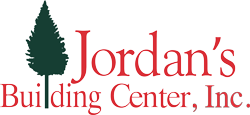Choosing the Right Wood for Your Project
In the rapidly evolving world of construction and DIY projects, the materials you select can significantly impact the outcome. The type of wood you choose plays a critical role in both the aesthetics and functionality of your project. With so many options available in 2024, understanding their unique characteristics is key to making an informed decision.
This comprehensive guide delves into five popular types—cedar, pine, redwood, plywood, and engineered wood—each with distinct advantages. By familiarizing yourself with these, you can ensure your project is built to last.
Cedar: Nature’s Blend of Beauty and Durability

When it comes to selecting a material that offers both beauty and longevity, cedar is an exceptional choice. Cedar’s rich red-brown hue and distinct aroma make it a standout for various applications. Cedar resists rot, decay, and pests, making it ideal for outdoor projects that face weather conditions. Cedar’s lightweight nature also simplifies the construction process, allowing for detailed craftsmanship in intricate designs.
Prime Cedar Applications:
- Outdoor Structures: Cedar is the perfect material for building decks, fences, and garden furniture that need to withstand harsh weather conditions.
- Sheds and Gazebos: Its natural resistance to decay ensures that these structures remain strong and intact over time.
- Architectural Enhancements: Cedar siding and trim add a touch of elegance to any building, making it preferred for those seeking both style and durability.
Pine: The Versatile Workhorse
Pine is one of the most versatile options available, offering a balance of affordability and reliability. As a widely available softwood, pine is a cost-effective option for many construction and DIY projects. Its sturdy nature resists warping, making it ideal for both structural and decorative applications. Pine’s adaptability also allows it to be easily stained or painted, ensuring it fits seamlessly into any design scheme.
Predominant Pine Utilizations:
- Structural Frameworks: Pine is dependable for building the foundational structures of homes and other buildings.
- Decorative Elements: Moldings and panels crafted from pine enhance the interior aesthetics of any space.
- Handcrafted Cabinets: Pine’s workability makes it an excellent material for creating detailed projects like cabinets.
Redwood: Nature’s Premium Offering

Redwood is a premium material renowned for its striking red color and exceptional durability. This is often chosen for high-end projects where luxury and longevity are paramount. Although it’s dense composition can make it more challenging to work with, the results are well worth the effort. As a top-tier option, it is an investment in quality, offering natural resistance to decay and the elements.
Redwood’s Esteemed Uses:
- Premium Exteriors: It is the material of choice for luxurious decks and barriers that are built to last.
- Garden Installations: Elevated beds and garden pots made from this to enhance the natural beauty of outdoor spaces.
- High-End Sheds and Pavilions: Redwood structures make a strong statement with their quality and aesthetic appeal, making them a popular material for premium outdoor projects.
Plywood: The Adaptive All-rounder

Plywood is engineered offering remarkable strength and versatility. Created by bonding multiple layers of veneers, it’s a layered structure that makes it resistant to cracking and breaking. This is available in various thicknesses and grades, making it suitable for a wide range of applications, from simple DIY projects to complex construction tasks. Its affordability and ease of use make it a go-to for both professionals and hobbyists.
Plywood’s Versatile Applications:
- Construction Fundamentals: It’s reliable for building durable partitions and flooring.
- Functional Furniture: This is commonly used in furniture making due to its consistent finish and strength.
- DIY Masterpieces: From storage solutions to home décor, plywood is a versatile material that can be used in countless DIY projects.
Engineered Wood: A Modernity Meets Tradition
Engineered wood represents a modern approach, blending traditional elements with advanced manufacturing techniques. This category includes materials like particle board, medium-density fiberboard (MDF), and oriented strand board (OSB), each offering unique benefits. Engineered is known for their stability and versatility, often providing a more affordable alternative to solid wood while maintaining a similar appearance. These materials are particularly favored for interior applications where durability and aesthetics are both important.
Top Engineered Wood Implementations:
- Contemporary Flooring: Engineered is ideal for modern flooring solutions that require both beauty and durability.
- Modern Cabinets: This material offers a polished look without compromising strength, making it a preferred choice for cabinetry.
- DIY Innovations: Its materials are perfect for bringing creative DIY projects to life, thanks to their affordability and ease of use.
Concluding Remarks:
As the world of construction and DIY projects continues to evolve in 2024, understanding the different types of wood materials available is more important than ever. Whether you’re working on a large-scale construction project or a simple home improvement task, selecting the right one is crucial to achieving the best results. By considering factors such as budget, project requirements, and desired aesthetics, you can make an informed decision that ensures the success of your project.
For expert advice tailored to your specific needs, consult the professionals at Jordan’s Building Center. With our extensive knowledge of wood materials, we can help you choose the best option for your project. Remember, crafting perfection begins with selecting the right material.

